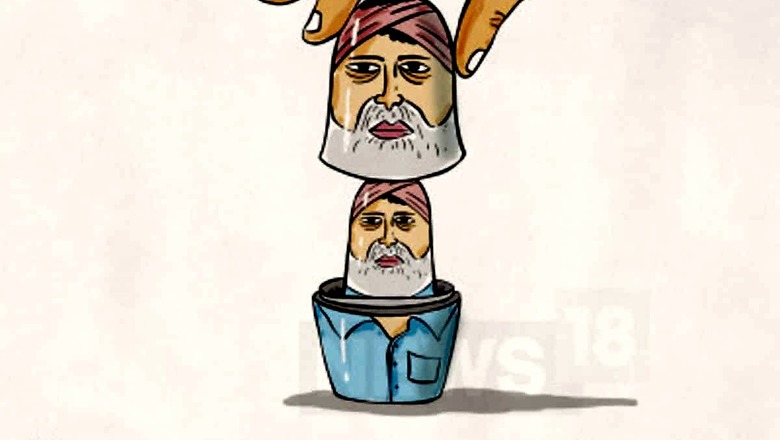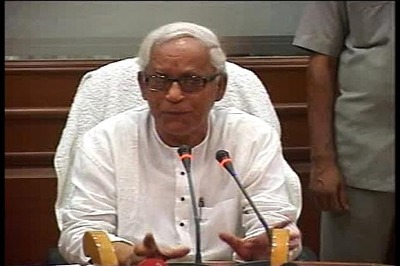
views
The so-called ‘reservations issue’ is not new to Tamil Nadu. It also has a century-long history to the scheme, and a slightly longer history, starting with limited struggle by the non-Brahmin upper castes. This time, as on many other occasions, it flowed out of the courts. In January this year, the Supreme Court held that reservations other than those for the SC-ST do not constitute Fundamental Rights under Chapter III of the Constitution, but only a ‘constitutional right’. Hence, the petitioners could not seek relief through the ‘writ jurisdiction’ of the Supreme Court (Article 32). The court reiterated the position in June, when a review was sought. It directed the petitioners to move the Madras High Court, which it said was the right forum for them to seek relief.
The petitioners included the state of Tamil Nadu, the ruling AIADMK, the opposition DMK and a host of other political parties in the state. The case itself related to the distribution of ‘surrendered seats’ from the all-India quota, in medical colleges (all professional colleges) run by the state government, under the BC-MBC quota scheme. ‘All-India quota’ seats had become mandatory, following a Supreme Court order in the 1980s.
The petitioners argued that after the NEET, that part of it had been covered, but there remained unfilled ‘all-India seats’. The High Court, citing an innocuous commitment in an affidavit filed by the Centre, at an early stage of the proceedings, declined the later-day argument, citing a pending Supreme Court case from Uttar Pradesh. With this verdict, the Supreme Court first and the High Court later, have willy-nilly accepted the generally held view that BC-MBC reservations belong in and to the state, as originally mandated by the First Amendment to the Constitution, as early as 1951, with a year of the statute coming into force.
Earlier this year, the union government under Prime Minister Narendra Modi began considering recasting the ‘income requirement’ for identifying and eliminating ‘creamy layers’ from the BC-MBC quota under the ‘Mandal scheme’ and under the verdict in what became known as the ‘Mandal case’ (Indra Sawhney vs Union of India, 1992). The Centre wanted to change salary income to ‘family income’ for eliminating the ‘creamy layer’. In Tamil Nadu, as is the wont, all political parties and the state government as a whole have opposed such a scheme. No representative of the castes that would stand to benefit more from such re-definition of the ‘creamy layer’ has spoken out, however – not that their politically-powerful social voices have been suppressed.
When it all began
Every time, the BC/MBC/OBC reservations topic is in the news, Tamil Nadu is there on the top of the list, or at least close to it. It is a big issue in the state's politics, yes. However, critics of the state and its socio-economic priorities are seldom understood outside for them to appreciate it and acknowledge it as such.
The social justice movement came to Tamil Nadu, rather the-then Madras Presidency, in the second decade of the last century. Though both the Presidency and also the social justice movement had a multi-linguistic southern background and ownership, it is only in Tamil Nadu that the movement took root as the Dravidian political entity.
Elsewhere, in what forms parts of (pre-bifurcation) Andhra Pradesh, Karnataka, Kerala and going up to the Odisha border, the founding fathers and their successors got lost in the new surge of the freedom movement, especially after the Indian National Congress. But not in the Tamil-speaking areas, where ‘Periyar’ E V Ramaswami (EVR) gave a new, ‘anti-Brahmin’ colour to what essentially was a non-Brahmin movement, thus keeping it alive until the original purpose got restored, post-Independence.
Madras, now Chennai, is where the British colonial rulers hit it big in the country. They came only as traders but by getting involved in domestic politics, they got revenue-collection rights in what became the Madras Presidency. At the stroke of a pen of the Nawab of Arcot, they got to ‘rule’ from parts of Andhra to the southern Tirunelveli district in present-day Tamil Nadu. Through battles and pacts, they expanded the Madras Presidency.
The new British masters needed more clerks for this job than they could get. The locals, especially the elite upper castes (not only Brahmins), who had lost royal patronage in the absence of strong local kingdoms for centuries, could do with jobs and family incomes. With the British also came modern education and healthcare.
The upper caste Brahmins were the first to benefit from the scheme. Given their traditional practice of untouchability, and clannishness that is not uncommon among others, they reportedly claimed most available jobs, by co-opting cousins and country-cousins, to the disadvantage of available candidates from other communities. At a time when permanent incomes became an equally compelling economic proposition cutting across all communities, the rest began feeling the pinch.
The non-Brahmin communities started a campaign of sorts against Brahmin domination in job recruitment and higher education, which became available after the British Crown took East India Company’s Indian possessions under its umbrella in 1857. The movement got a real shape with the turn of the century.
After a few false starts and failures, the non-Brahmin upper castes founded the South India Liberal Federation (SILP) in 1916. It came to be known as the ‘Justice Party’, after the name of its mouthpiece in English. The Justice Party is the ideological forerunner to the later-day Dravidian movement, which comprised Periyar’s Dravidar Kazhagam (DK), the breakaway DMK and the AIADMK that broke away from the latter.
Quota for Brahmins
With the Indian National Congress (INC), the older and the larger of the two organisations, boycotting the 1920 elections, held under the Montagu-Chelmsford Reforms, the Justice Party won a majority of seats in the Madras Presidency Council, and came to power. Keeping its commitment to the cause of social justice, it came up with the ‘First Communal Government Order’ (1921) and the ‘Second Communal Government Order’ (1924), introducing reservations for the first time in British India.
However, the princely state of Kolhapur, ruled by a descendant of Chhatrapati Shivaji, was where it all began at the turn of the century, in 1902, followed by the princely Mysore state. The two Communal GOs of the Justice Party and the third one, under the successor government of Independents under chief minister P Subbarayan, which also operationalised the same, gave a detailed list of quotas in a broad, community-centric basis.
While often misunderstood, as much inside the state as outside, none of these GOs denied reservations for the Brahmin community. Under the rotational scheme, the quota for Brahmins worked out to 14 per cent. It was lost post-Independence, when the Supreme Court struck it down, citing the Constitution, which provided for reservations only for SC-ST communities (Champakam Dorairajan vs State of Madras). Apart from Brahmins, reservations also went for non-Brahmin castes, Muslims and Christians – other than SC-ST communities.
First Amendment
The Supreme Court verdict ignited protests, especially across the Tamil areas of what became the Composite Madras State under the Constitution. Competing with each other, Periyar’s DK and breakaway DMK (Dravida Munnetra Kazhagam, founded in 1949) took to the streets in a big way. K Kamaraj, who later became chief minister (1954-63), who was the state Congress president, took it up with Prime Minister Jawaharlal Nehru.
The First Amendment to the Constitution, which needed to be passed for certain procedural corrections, included a provision, empowering state governments to create quotas for communities that would identify as ‘Backward Classes’ (BC). Leaders of Brahmin, Muslim and Christian communities did not protest, nor did they work for including their communities under the First Amendment scheme. If some of them now feel left out, it is owing to their forebears, and not others.
The Congress state government began with 16 per cent reservations for BCs. With Kamaraj becoming chief minister in 1954, and commencing what could well be called the ‘Mandalisation’ of political leadership in the state, down to the lower levels, no need was really felt for expanding the quota till late in the next decade.
In between, Kamaraj’s free elementary school education for children and free noon-meals scheme too had brought about a social revolution in rural areas and backward communities. In turn, this increased the pressure for college seats, including professional college seats, when the rival DMK came to power after the historic elections of 1967.
BC to MBC and more…
It is not as if the state government did not understand the inequities that the reservations scheme was causing even among the identified BC list. DMK chief minister M Karunanidhi, who succeeded party founder CN Annadurai after the latter’s short-stint in office, appointed the AN Sattanathan Commission to study the BC reservations scheme in the state. The bureaucratic panel identified individual castes that were getting a larger piece of the cake while others in the list suffered.
Given the social realities and political pressures, the Karunanidhi government did not accept the commission’s recommendation to identify the ‘benefited class’ – or, rather, identified in the report already. If it had happened, ‘Dravidian’ Tamil Nadu would have been the first to implement the ‘creamy layer’ concept, which the Supreme Court divined two decades later, in the 1990s. Instead, the state government listed out the ‘less privileged’ from the existing scheme as ‘Most Backward Classes’ (MBC), increased the total quota, to benefit the new class, exclusively. At a time, the nation was united in extending the initial 30-year constitutionally mandated reservations for SC-ST, it could not have been otherwise in Tamil Nadu, when it came to the BC-MBC quota.
The MGR government that followed the Karunanidhi regime, appointed the J Ambasankar Commission, likewise, to study the implementation of the BC-MBC quota scheme. The commission came up with an even more innovative idea. Acknowledging the existence of a section of the population, who qualified, going by family incomes but not by birth/caste, the commission recommended and the state government implement a new regime, which included reservations for those with family incomes below Rs 9,000 a year.
However, MGR allowed himself to be convinced that his AIADMK’s reversal in the post-Janata Lok Sabha polls to the formidable Congress-DMK alliance in 1980, owed to his quota scheme – and withdrew it. Else, it would have been the pioneer to the current scheme, initiated by the Modi government at the Centre and endorsed by all political parties when a constitutional amendment was moved in both Houses of Parliament, ahead of the Lok Sabha polls last year. However, it remains to be seen how the higher judiciary approaches the question, if and when moved, as in the past, the Supreme Court had unequivocally ruled against ‘economic reservations’ independent of caste – or, ‘creamy layer’.
Tamil Nadu has seen other efforts at enlarging and reaching out, in terms of caste-based reservations, to include other unaddressed aspects. Thus, the DMK government of late Karunanidhi, at different points in time, introduced a 10 per cent quota in professional colleges for a ‘first graduate’ in a family. It was expected to benefit the rural population in particular. There were also separate reservations for the Muslim community. The Supreme Court struck it down, on the lines of the Andhra law it had quashed earlier.
From within the constitutionally mandated 17 per cent for the SCs, the state government reserved an internal quota for the Arunthathiyar sub-caste, in the western districts especially. The community is both economically and socially backward in relative terms to the other two dominant sub-sects, namely Adi Dravidar in the northern districts and Devendra Kula Vellalar (DKV) in the south, with a separate political identity, too.
Doublespeak
In her time in office, the late J Jayalalithaa also did a lot to swear by the state’s 69 per cent reservations scheme, as fixed by her political mentor MGR in his time. The Tamil Nadu government case from the mid-1990s is still pending final disposal in the Supreme Court. However, when the top court sought to enforce the 50-per cent upper-limit fixed in the ‘Mandal case’, the Jayalalithaa government stuck to 69 per cent at the commencement of the academic year, and would increase the number of seats when queried by the Supreme Court later on, to meet with its 50-per cent upper limit. This explains the sudden spurt in the number of professional colleges in the state, which was mistaken as a product of the economic reforms that coincided at the time. It should also explain the glut over the past few years.
Nothing explains the political doublespeak on the reservations issue in ‘Dravidian’ Tamil Nadu, dubbing it as more parochial and politically oriented than the conduct of the ruling BJP at the Centre. The party, to its supporters especially in the state, is seen as being progressive and off-beat on matters of reservation. Yet, when it came to the choice of a new state party president, a post that was kept vacant for a few months, the BJP has settled for L Murugan, who is from the well-deserved Arunthathiyar sub-caste among the Dalits in Tamil Nadu.
The party had tried its luck initially with Brahmins, then Vellala-Gounders from the region, in the aftermath of the ‘Coimbatore serial blasts’ (1998), and later Nadars from the traditional southern strongholds. The party has come a long, long way since the days of another Dalit state unit chief, Dr Kirubakaran, a medical professional, who while quitting office after his three-year term, actually shed tears in public, narrating how he was humiliated by the rest for being born a Dalit, and how he was not allowed to even use his office in the state BJP headquarters in Chennai.
(The writer is Distinguished Fellow and Head-Chennai Initiative, Observer Research Foundation, the multi-disciplinary Indian public-policy think tank, headquartered in New Delhi. Views expressed are personal.)




















Comments
0 comment